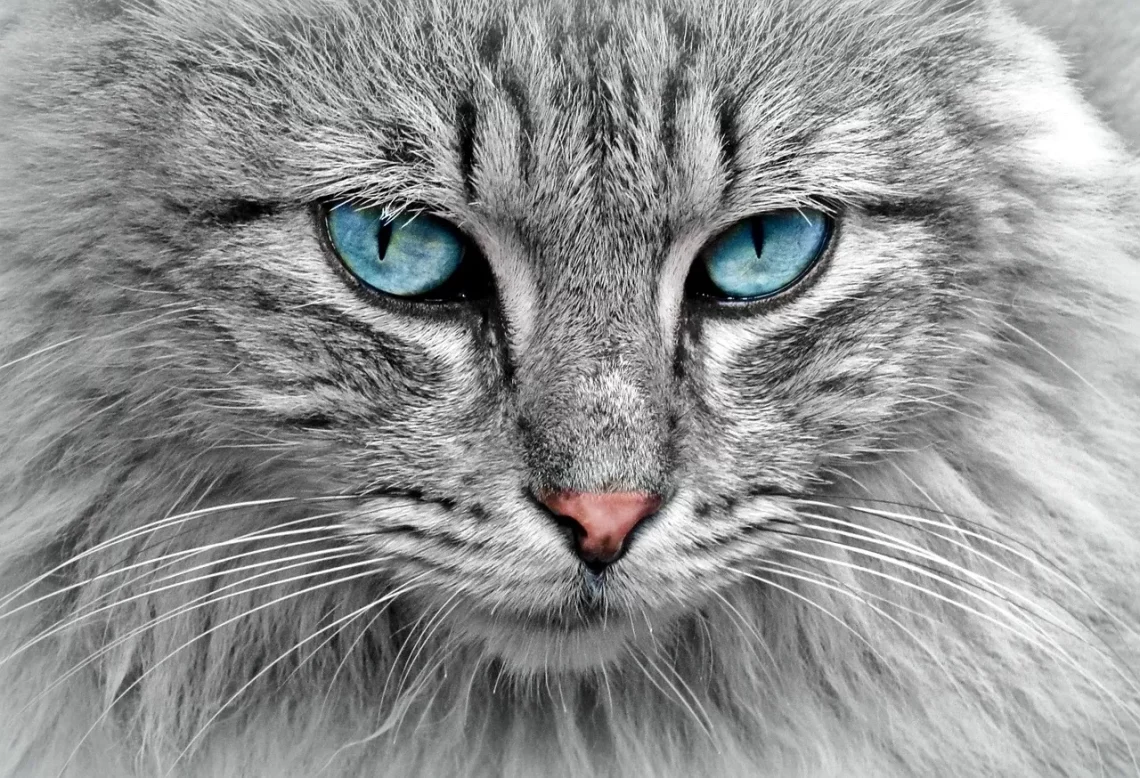
Understanding Cat Sneezing and Watery Eyes: Causes and Solutions
Cat owners often encounter a variety of peculiar behaviors and symptoms from their feline companions. Among these, sneezing and watery eyes can be particularly concerning. While these signs might seem innocuous or even amusing at first glance, they can indicate underlying health issues that require attention. Understanding the reasons behind these symptoms is essential for every cat owner, as it can help ensure the overall wellbeing of their pets.
Cats, like humans, have a respiratory system that can be affected by various factors, including allergies, infections, or environmental irritants. Sneezing is a natural reflex that helps clear the nasal passages, and it can occur for a multitude of reasons. Similarly, watery eyes, also known as epiphora, can arise from different underlying causes, ranging from mild irritations to more serious health concerns.
When a cat exhibits these symptoms, it can be alarming, especially for new pet owners. Recognizing the signs and understanding their implications can help in determining whether a visit to the veterinarian is necessary. In this article, we will explore the potential causes of sneezing and watery eyes in cats, as well as the solutions available to address these issues effectively.
Common Causes of Cat Sneezing
Sneezing in cats can be triggered by a wide range of factors. One of the most common reasons is upper respiratory infections, which can result from viruses or bacteria. Feline herpesvirus and calicivirus are two viral agents frequently associated with these infections. Cats can contract these viruses through direct contact with infected animals or contaminated surfaces. Symptoms of upper respiratory infections may include sneezing, nasal discharge, coughing, and sometimes fever.
Allergies are another frequent culprit behind sneezing in cats. Just like humans, cats can develop allergies to various substances, including pollen, dust mites, mold, and certain foods. When exposed to allergens, a cat’s immune system may react, leading to inflammation of the nasal passages and resulting in sneezing. Identifying the specific allergen can be challenging, but observing patterns in your cat’s behavior can provide clues. For instance, if sneezing occurs seasonally or in specific environments, allergies may be the cause.
Environmental irritants can also play a role in triggering sneezing. Smoke, strong odors, and household chemicals can irritate a cat’s sensitive nasal passages. If you’ve recently painted a room, used cleaning products, or introduced new fragrances, consider whether these may coincide with your cat’s sneezing episodes.
In some cases, foreign objects lodged in the nasal passages can lead to sneezing as well. Cats are naturally curious creatures, and it’s not uncommon for them to sniff around and inadvertently inhale small particles. If a foreign object is suspected, it is crucial to seek veterinary assistance to prevent further complications.
Lastly, dental issues can sometimes manifest as sneezing. Infections or abscesses in the mouth can affect the nasal passages, leading to respiratory symptoms. If your cat is sneezing alongside other signs like bad breath or difficulty eating, a dental examination may be necessary.
Understanding Watery Eyes in Cats
Watery eyes, or epiphora, can occur for several reasons, and understanding these causes is vital for effective treatment. One common reason for watery eyes in cats is conjunctivitis, an inflammation of the eye’s conjunctiva. This condition can be caused by infections, allergens, or irritants. Symptoms of conjunctivitis may include redness, swelling, and excessive tearing. If you notice your cat has red or swollen eyes, it’s essential to consult a veterinarian for an accurate diagnosis and appropriate treatment.
Another potential cause of watery eyes is blocked tear ducts. Tears are produced in the eyes but drain through a system of ducts. If these ducts become blocked, tears can overflow and lead to excessive tearing. This condition may require veterinary intervention to clear the blockage and restore normal tear drainage.
Allergies can also contribute to watery eyes in cats. Similar to sneezing, allergens can trigger an inflammatory response in the eyes, leading to excessive tearing. Identifying and minimizing exposure to allergens can help alleviate symptoms.
Infections, whether bacterial or viral, can also cause watery eyes. Feline viral rhinotracheitis, for example, can lead to respiratory symptoms, including watery eyes. In such cases, addressing the underlying infection is crucial for recovery.
In some instances, more serious health issues can present as watery eyes. Tumors or growths in the eye area can disrupt normal tear drainage, leading to excess tearing. If your cat’s watery eyes persist or are accompanied by other concerning symptoms, a thorough veterinary examination is essential.
Solutions and Treatments for Sneezing and Watery Eyes
When dealing with sneezing and watery eyes in cats, the first step is understanding the underlying cause. Home care can often help alleviate mild symptoms, but persistent or severe cases require veterinary attention.
For mild allergies, eliminating potential irritants from your cat’s environment can make a significant difference. Regular cleaning to reduce dust and allergens, using air purifiers, and avoiding exposure to smoke or strong fragrances can help create a healthier space for your feline.
In cases of upper respiratory infections, supportive care is essential. Ensure your cat has access to fresh water and a comfortable resting area. Steam therapy, such as a warm shower where your cat can breathe in moist air, can help soothe inflamed nasal passages. For more severe infections, your veterinarian may prescribe medications, including antibiotics or antivirals, depending on the cause.
For cats with watery eyes due to conjunctivitis, your veterinarian may recommend topical treatments or medications to reduce inflammation and address any underlying infections. If allergies are the culprit, antihistamines or corticosteroids may be suggested to manage symptoms effectively.
If your cat has blocked tear ducts, your veterinarian may perform a flushing procedure to clear the obstruction. Regular cleaning of the eye area with a damp cloth can help manage excessive tearing and keep the area clean.
In all cases, regular veterinary check-ups are crucial for maintaining your cat’s overall health. Early detection of any underlying issues can significantly improve treatment outcomes and enhance your cat’s quality of life.
**Disclaimer:** This article is for informational purposes only and does not constitute medical advice. Always consult a veterinarian for health concerns regarding your pet.




